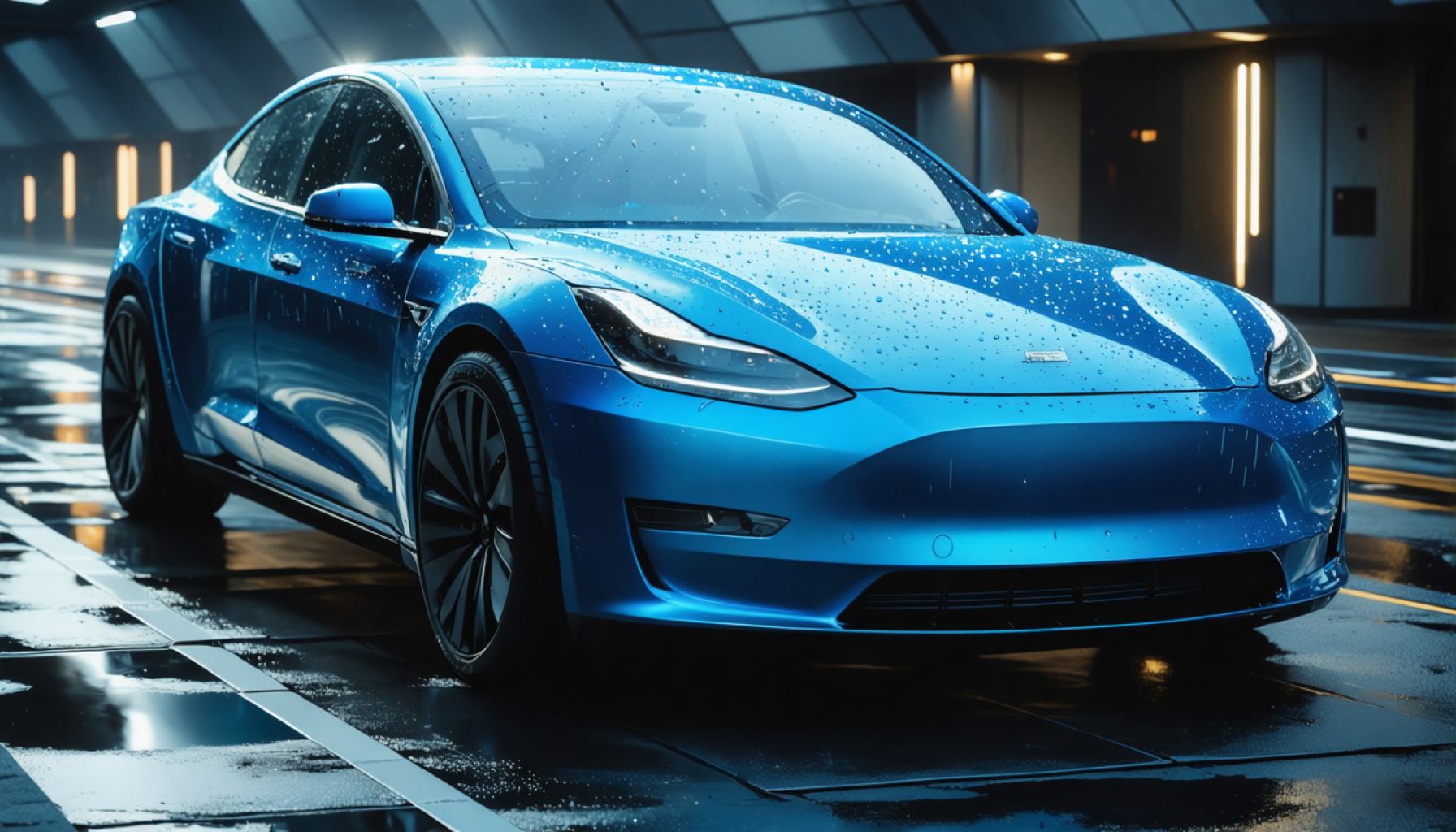- President Trump’s 25% tariff on imported vehicles and parts could hinder the growth of the electric vehicle (EV) sector.
- This tariff may inflate consumer costs, potentially adding up to $12,000 to the price of an electric SUV.
- Domestic automakers, including Tesla, face disruptions due to the interconnected nature of modern supply chains.
- Manufacturers are challenged by increased production costs and supply chain disruptions, affecting vehicle availability.
- Consumer hesitation due to higher prices may delay the transition from gasoline to electric vehicles.
- This policy highlights a critical juncture for the EV industry, risking slowed progress toward electric vehicle adoption.
- The larger impact threatens to impede the EV revolution unless careful navigation within the globalized industry occurs.
Dark clouds gather over the electric vehicle sector as President Donald Trump unleashes a sweeping 25% tariff on imported vehicles and auto parts. This move, designed to ignite the engines of domestic production, might instead stall the EV surge that has promised to reshape our roads and our future. With every imported component now burdened by additional costs, automakers face an uphill battle, teetering on the edge of a looming price hike storm.
Picture this: for the American family eyeing an electric SUV, the dream could suddenly inflate by up to $12,000. Such a spike could leave many in the lurch, postponing that EV upgrade and clinging a little longer to their gas-guzzling past. The ripple effects are far-reaching, extending even to the titans of the domestic auto industry like Tesla, which relies heavily on a web of global partnering and sourcing to keep its assembly lines humming. Approximately a quarter of the Tesla Model Y’s components cross the border from Mexico; these are now subject to the same daunting tariffs. Tesla’s appeals for tariff relief underscore a harsh reality: the modern automotive supply chain is an intricate, interconnected beast.
Hidden within this economic turmoil is the plight of manufacturers who scramble to untangle disrupted supply lines. With parts previously as reliable as the sunrise now ensnared by tariffs, production costs climb relentlessly. This disturbance hits hardest in the commercial transportation sector, where every minute of delay in vehicle availability translates into lost opportunity and increased expense.
Compounding the challenge is a potential consumer hesitation, chilled by a sudden lack of affordability. The balance of forces suggests a critical juncture; the very future of electric vehicles now dangles in precarious suspension. This policy, while a sincere attempt to reclaim manufacturing sovereignty, introduces new friction that could slow progress toward electric vehicle adoption.
In this pivotal moment, the stakes transcend mere tariffs. The heart of a budding EV revolution now confronts the specter of stunted growth, as external cost pressures might eclipse the industry’s buoyant momentum. As automakers and consumers navigate these uncertain waters, the essential takeaway becomes clear: to nurture the seeds of innovation, one must tread carefully within the interconnected and globalized ecosystem that is modern industry.
How Trump’s Tariff Could Derail the Electric Vehicle Revolution
Understanding the Impact of Tariffs on the Electric Vehicle Sector
The implementation of a 25% tariff on imported vehicles and auto parts under President Donald Trump’s administration presents a complex and multifaceted challenge for the electric vehicle (EV) industry. Below are key insights and predictions regarding this significant regulatory move.
Tariffs: A Double-Edged Sword
1. Immediate Cost Implications: The tariffs increase the cost of imported components critical to EV production. As the production costs rise, these expenses are inevitably passed on to consumers. For families considering an electric SUV, this could mean a price increase of up to $12,000, making EVs less accessible and dampening demand (source: Forbes).
2. Impact on Domestic Manufacturing: While the intent of the tariff is to incentivize domestic manufacturing, the reality could be counterproductive. Automakers, including U.S. giants like Tesla, rely on intricate global supply chains. Disruptions in this network could stagnate production efficiency rather than boost local manufacturing efforts.
3. Tesla’s Position: Tesla, a pioneer in the EV market, is particularly vulnerable due to its reliance on international components. With approximately 25% of the Tesla Model Y’s parts sourced from Mexico, the tariffs could significantly impact their production costs and timeliness (source: Tesla).
Long-Term Industry Trends
– Shift in Market Dynamics: Automakers might respond by seeking new supply chains, investing in domestic parts manufacturing, or passing the cost onto consumers. This could lead to a reshuffling of market leaders based on who adapts most efficiently (source: Automotive News).
– Consumer Behavior: Higher costs may deter potential EV buyers, slowing the transition to greener transportation solutions. The industry might see a temporary resurgence in traditional gasoline vehicles unless alternative solutions are devised (source: CNBC).
Sustainable Solutions and Opportunities
1. Enhancing Domestic Production: Automakers could invest in local manufacturing plants to mitigate tariff impacts. This involves significant capital investment but could eventually lead to reduced dependence on foreign parts and a stronger domestic industry (source: Reuters).
2. Focus on Innovation: Companies can explore cost-efficient innovations, such as alternative materials or new manufacturing technologies, to offset increased production costs.
3. Government Support: Policy tweaks, such as subsidies for local manufacturers or incentives for EV buyers, could help counterbalance the tariffs’ negative effects.
Actionable Recommendations for Consumers and Automakers
– For Consumers: Consider timing your EV purchase to potentially avoid price hikes, or explore leasing options while the market stabilizes.
– For Automakers: Analyze and, if feasible, reconfigure supply chains to emphasize domestic suppliers. Also, explore lobbying for government incentives and policies that support the manufacturing shift.
In conclusion, while the tariffs introduce significant hurdles, they simultaneously create an opportunity for the industry to innovate and localize production. Navigating these challenges prudently can ensure the continued growth and adoption of electric vehicles.
For more insights, visit Electrek for the latest news on electric vehicle technology and market trends.
